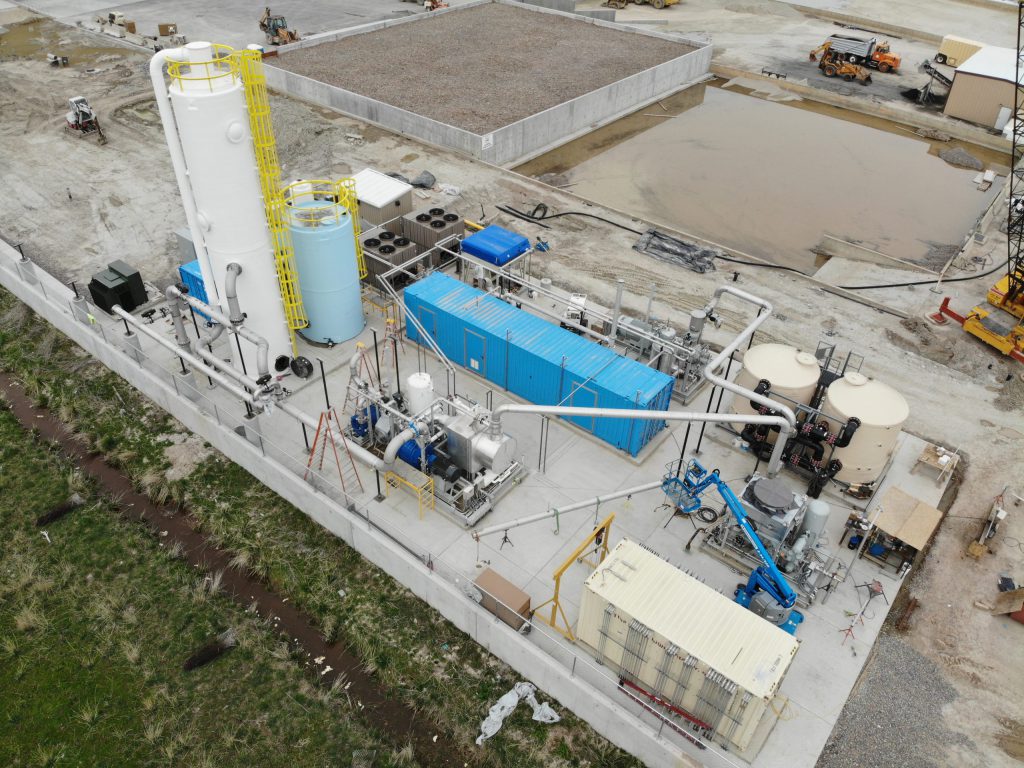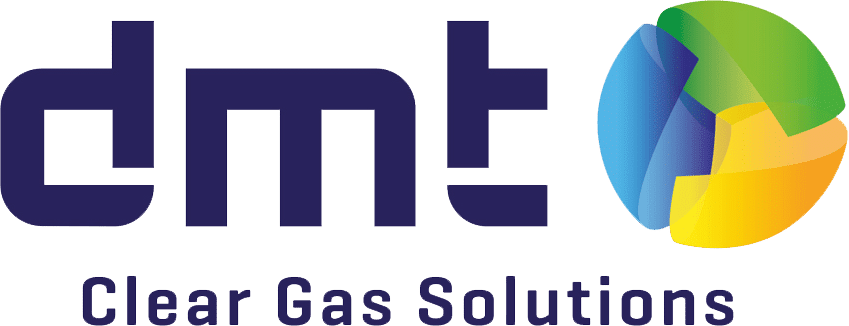Impressive OPEX Savings for H₂S Removal
Using Biological Regeneration (BR) Technology for Biogas Upgrading Projects
H2S Removal from Biogas Upfront
DMT Clear Gas Solutions is no stranger to hydrogen sulfide (H2S) removal from biogas nor prestigious industry awards. In 2018, DMT received the “Biogas Innovation of the Year” award from the American Biogas Council for their fully integrated biogas conditioning and upgrading plant on a dairy farm located in Fair Oaks, Indiana. The plant incorporates DMT’s Sulfurex® BR system for bulk H2S removal upfront of their reliable Carborex® MS system for carbon dioxide (CO2) removal.
Why remove H2S from the raw biogas?
H2S is a dangerous toxic constituent. Exposure to humans causes a range of symptoms including tremors, skin irritation, headaches, and nausea. While inhaling high concentrations can cause rapid unconsciousness, H2S is also extremely corrosive to equipment. When combined with water, it forms sulfuric acid which can cause costly damage to tanks, pipework, valves, or compressors.
Because of this, DMT removes H2S upfront of the feed gas compressor to the Carborex® MS. This decision saves clients money that would otherwise be spent on compressor servicing and breakdowns.
Integrated Biological Process with Caustic Scrubbing
DMT has been very effective in developing a suite of H2S removal solutions. While the Sulfurex® BR is similar in many ways to the Sulfurex® CR, it is distinguished by one important component. This is the biological process integrated with the caustic scrubber, which includes a standalone reactor and settler. The reactor is the home of the Thiobacillus bacteria which thrives in the optimal conditions set by DMT’s engineering team.
OPEX savings from caustic regeneration
Like all living things, the Thiobacillus bacteria requires oxygen to survive. DMT’s Sulfurex® BR introduces air through membrane diffusers located at the bottom of the reactor. The system achieves the correct oxygen transfer efficiency while also ensuring there is appropriate mixing taking place in the reactor. By separating the bioreactor and caustic regeneration from the scrubber, there is no oxygen transfer to the biogas. This maintains the biogas’ BTU and caloric value.
DMT claims OPEX savings with the Sulfurex® BR system due to the Thiobacillus bacteria. In the biological reactor, the bacteria oxidizes the H2S to elemental sulfur and in the process regenerates the caustic solution used to dissolve the H2S into the water in the first place. This process creates more than 90% of caustic recovery and dramatically decreases the need to purchase large amounts of caustic chemicals.

What happens to the elemental sulfur oxidized by the bacteria in the system?
Elemental sulfur is pumped to the settler and separates from the water before being flushed out of the system entirely. Elemental sulfur, or non-hazardous fertilizer, is a great by-product from the Sulfurex® BR. This is not the case with other desulfurization technologies that produce more hazardous waste. These waste streams are often difficult to handle and costly to dispose of at select facilities.
No Oxygen Addition to the Biogas
Additionally, when upgrading biogas it is important to not have any oxygen (O2) introduction. This is because most U.S. pipeline injection specifications will mandate between 0.1% and 0.2% O2 concentration in the product gas. It is a constituent you are trying to remove rather than introduce! This is not a problem utilizing the Sulfurex® BR. Even though air is introduced into the reactor, no O2 entrapment occurs in the biogas. The Sulfurex® BR is, therefore, ideal technology for desulfurizing biogas meant for pipeline injection.
Operating a Biological Treatment System
With any biological treatment system, following the correct operating procedures ensures the longevity and health of the bacterial colony. For all sites, DMT provides comprehensive training to incumbent operators prior to and during the commissioning of the plant.
Additionally, DMT’s service team can assist with the plant’s servicing requirements or monitor plant performance through a service level agreement. To ensure maximum efficiency after commissioning, the team analyzes logged performance indicators to optimize the plant’s performance. The team also alerts the client about any data inconsistencies, which may be a symptom of an underlying operational challenge.
DMT’s service team is only a phone call away to troubleshoot any issues. When contracted to operate and maintain the plant on your behalf, DMT’s service team handles all operational issues. These clients get to relax, enjoy the maximum possible uptime and on-spec renewable natural gas (RNG)!
Sulfurex® BR Technology Applications
Considering the Sulfurex® BR’s features, which industries and applications does this technology best suit? The Sulfurex® BR is ideal for wastewater treatment plants (WWTP), the dairy industry, landfills, and the oil and gas industry.
Sulfurex® BR: high loadings, flexibility and reliability
The Sulfurex® BR plays an important role in DMT’s desulfurization technology portfolio. It can effectively treat biogas with high loadings (> 3000 ppm) while providing operational flexibility and reliability. The bacteria themselves are robust and resilient. They bounce back from neglect in the laboratory and in the field with surprising speed, ensuring high plant uptimes. For high H2S concentrations, the Sulfurex® BR is also superior to consumable-based technologies where OPEX costs are prohibitively high.
As a comparison, a conventional caustic (NaOH) scrubber with pH control uses approximately 15-20 pounds (lbs) of NaOH per lbs of sulfur (S) removed. DMT’s two-stage Sulfurex® CR scrubber reduces this amount to approximately 10-12 lbs NaOH/lbs S, or to 7-8 lbs NaOH/lbs S through its innovative and integrated cooling system. In contrast, the Sulfurex® BR uses only 0.55-0.85 lbs NaOH/lbs S. Using an operational project in North America with a biogas inlet concentration of 1500 SCFM and a H2S concentration of 4000 ppm, the annual savings when using the Sulfurex® BR exceeded more than 1 million USD when compared to conventional scrubbers. Removing this amount of sulfur with adsorption media would have costed 2 million USD more.
With seven references for the Sulfurex® BR in North America since 2015 and additional plants destined for deployment soon, the combination of DMT’s innovative approach to solving problems in the biogas space, together with the Thiobacillus bacteria, seem to be a recipe for success!
Author: Graham Hartlett, Missy Lee
Industries: WWTP, SSO, Landfill, Agriculture/Dairy, Industry, Oil/Gas
Keywords: DMT, DMT Clear Gas Solutions, H2S removal, OPEX, service, Thiobacillus bacteria, biogas upgrading, biogas desulfurization
